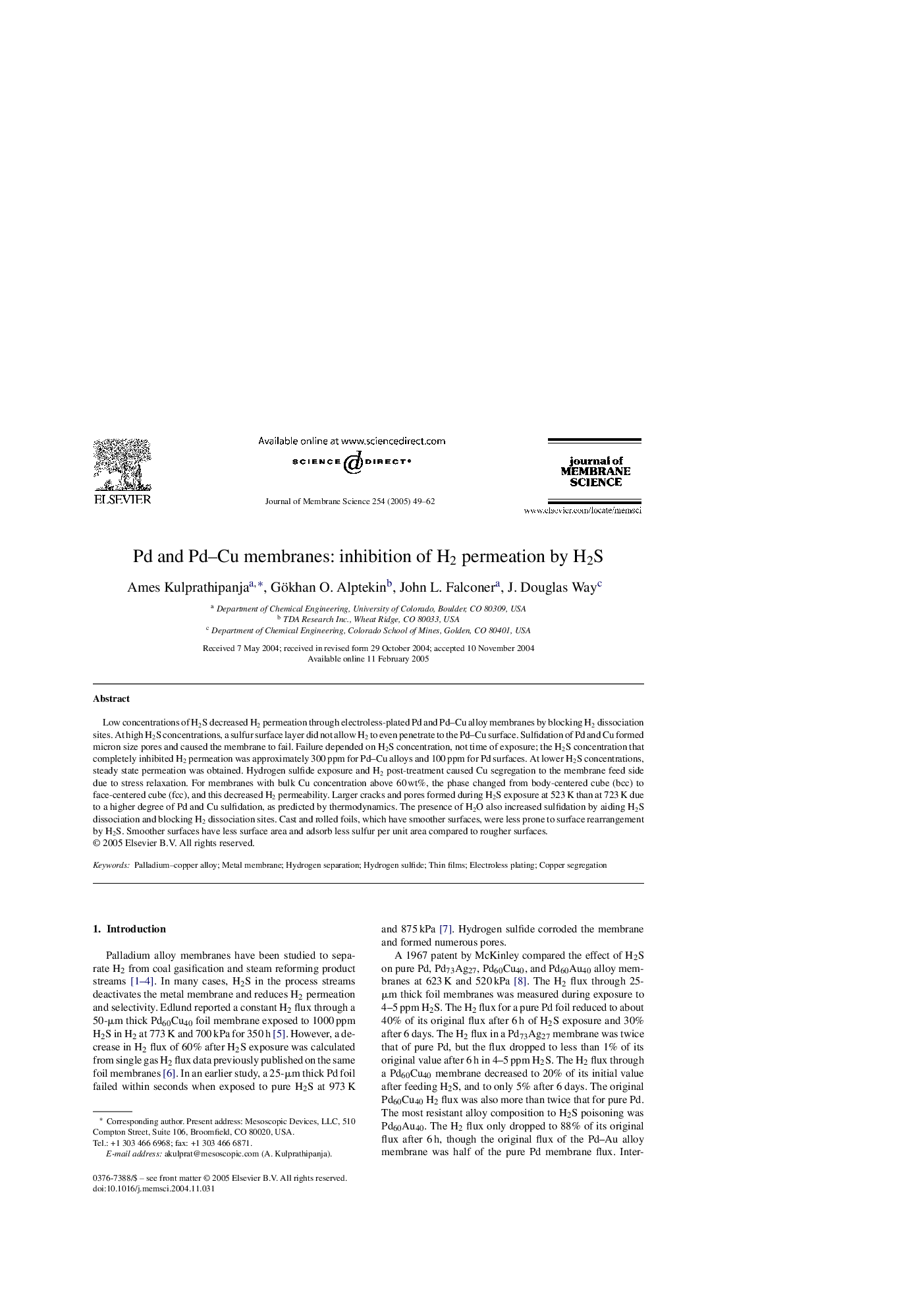| Article ID | Journal | Published Year | Pages | File Type |
|---|---|---|---|---|
| 9684867 | Journal of Membrane Science | 2005 | 14 Pages |
Abstract
Low concentrations of H2S decreased H2 permeation through electroless-plated Pd and Pd-Cu alloy membranes by blocking H2 dissociation sites. At high H2S concentrations, a sulfur surface layer did not allow H2 to even penetrate to the Pd-Cu surface. Sulfidation of Pd and Cu formed micron size pores and caused the membrane to fail. Failure depended on H2S concentration, not time of exposure; the H2S concentration that completely inhibited H2 permeation was approximately 300Â ppm for Pd-Cu alloys and 100Â ppm for Pd surfaces. At lower H2S concentrations, steady state permeation was obtained. Hydrogen sulfide exposure and H2 post-treatment caused Cu segregation to the membrane feed side due to stress relaxation. For membranes with bulk Cu concentration above 60Â wt%, the phase changed from body-centered cube (bcc) to face-centered cube (fcc), and this decreased H2 permeability. Larger cracks and pores formed during H2S exposure at 523Â K than at 723Â K due to a higher degree of Pd and Cu sulfidation, as predicted by thermodynamics. The presence of H2O also increased sulfidation by aiding H2S dissociation and blocking H2 dissociation sites. Cast and rolled foils, which have smoother surfaces, were less prone to surface rearrangement by H2S. Smoother surfaces have less surface area and adsorb less sulfur per unit area compared to rougher surfaces.
Related Topics
Physical Sciences and Engineering
Chemical Engineering
Filtration and Separation
Authors
Ames Kulprathipanja, Gökhan O. Alptekin, John L. Falconer, J. Douglas Way,
